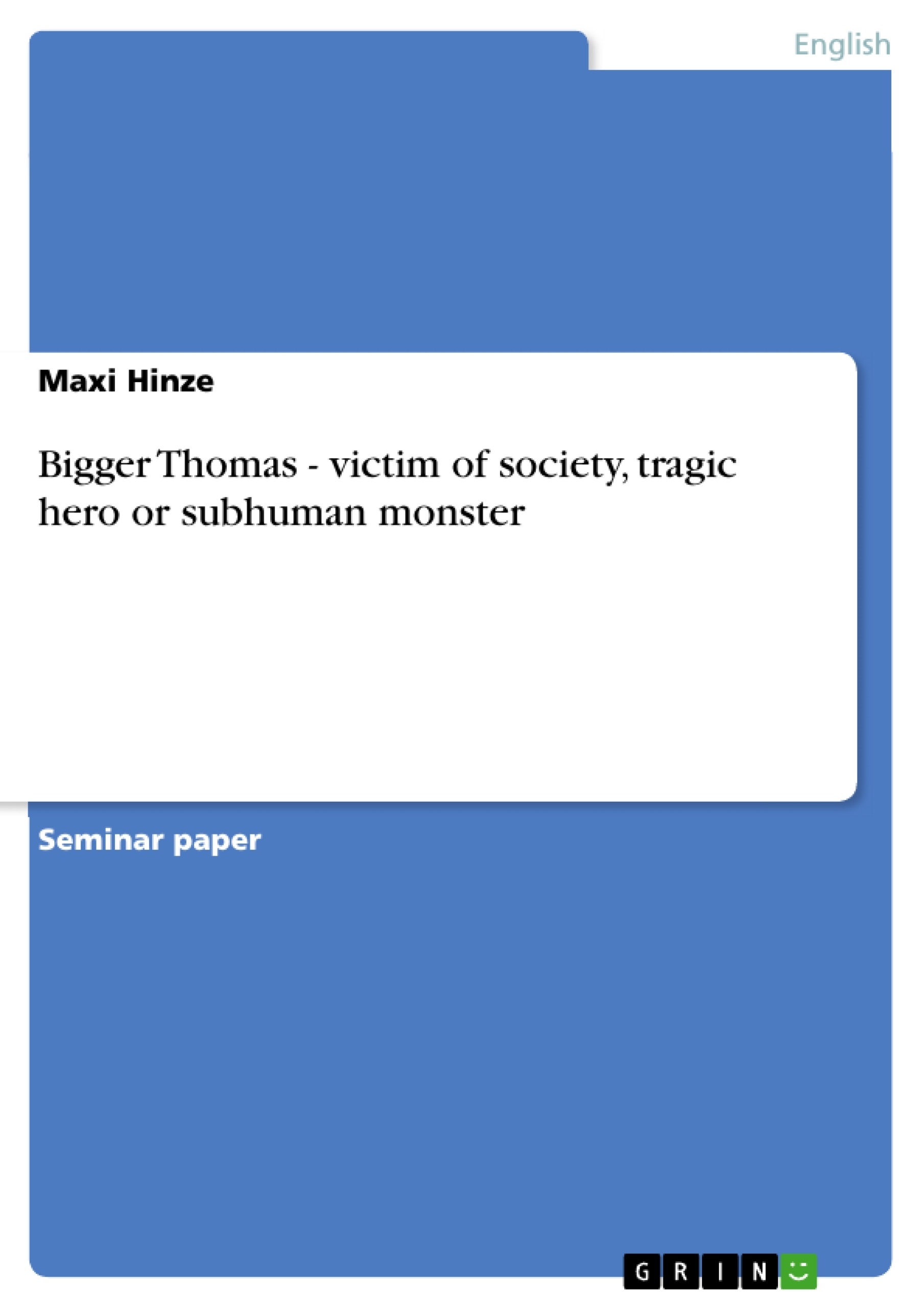Soon after its publication on March 1st 1940 it seemed to be clear that "Native Son" was the great breakthrough in the career of the young black author Richard Wright.
In his masterpiece, Richard Wright portrays the life of the 20 - year old protagonist Bigger Thomas who lives with his mother, sister and brother in a shabby, rat - infested one - bedroom apartment on the South Side of Chicago, known as the "Black Belt". His father died long ago and his mother s wage is meager. Consequently, Bigger had to leave school early and grows up poor and uneducated in the segregated society of the late 1930s . His childhood and adolescence have been filled with hostility and oppression and he seems to be destined to meet a bad fate...
Whereas most critics agreed on the fact that this novel was powerful enough to grip the reader with or against his will, the novel s protagonist - Bigger Thomas - seemed to have arisen a lot of controversy in most of the reviews.
In the following essay I will analyse the complex character of the protagonist and draw a conclusion on the question whether Bigger Thomas is a subhuman monster, a victim of society, a tragic hero, a bit of everything - or none of it at all...
Inhaltsverzeichnis
- Introduction
- Bigger Thomas - victim of society, tragic hero or subhuman monster?
- Conclusion
Zielsetzung und Themenschwerpunkte
This paper examines the complex character of Bigger Thomas in Richard Wright's novel "Native Son", analyzing his living conditions and the development of his personality and attitudes towards white people throughout the story. It explores the differences between Bigger and other black characters in the novel and ultimately aims to draw a conclusion on the question of whether Bigger is a subhuman monster, a victim of society, a tragic hero, a bit of everything, or none of it at all.
- The impact of societal racism and segregation on Bigger Thomas's life and actions
- The complex and multifaceted nature of Bigger's character, examining whether he is a victim of circumstance or a perpetrator of violence
- The role of language and narrative style in portraying the realities of Black life in America
- The contrasting perspectives on Bigger's character, ranging from portrayals as a subhuman monster to a tragic hero
- The significance of "Native Son" as a landmark work in African American literature and its influence on social consciousness during the Great Depression
Zusammenfassung der Kapitel
- Introduction: This chapter introduces the novel "Native Son" by Richard Wright, highlighting its success and impact upon publication in 1940. It discusses the novel's portrayal of the harsh realities of being a Black person in a racist and segregated society and Wright's deliberate attempt to avoid creating a sentimental narrative. The chapter also mentions the controversial reception of the novel, particularly regarding the character of Bigger Thomas.
- Bigger Thomas - victim of society, tragic hero or subhuman monster?: This chapter examines the critical reception of Bigger Thomas, discussing the divergent views that emerged from the novel's publication. Some critics, like James Baldwin, viewed Bigger as a stereotype, while others, like Maurice Charney, considered him a "subhuman creature" driven by primitive impulses. The chapter also explores the naturalistic perspective, arguing that Bigger is a product of his environment and a victim of societal forces beyond his control. Other critics, however, see a more complex character in Bigger, one who actively resists the limitations imposed on him.
Schlüsselwörter
The main keywords and focus topics of this paper include: "Native Son", Richard Wright, Bigger Thomas, racism, segregation, social injustice, African American literature, naturalistic perspective, tragic hero, victim of society, subhuman monster, character analysis, literary criticism.
- Quote paper
- Maxi Hinze (Author), 2006, Bigger Thomas - victim of society, tragic hero or subhuman monster, Munich, GRIN Verlag, https://www.grin.com/document/69059



